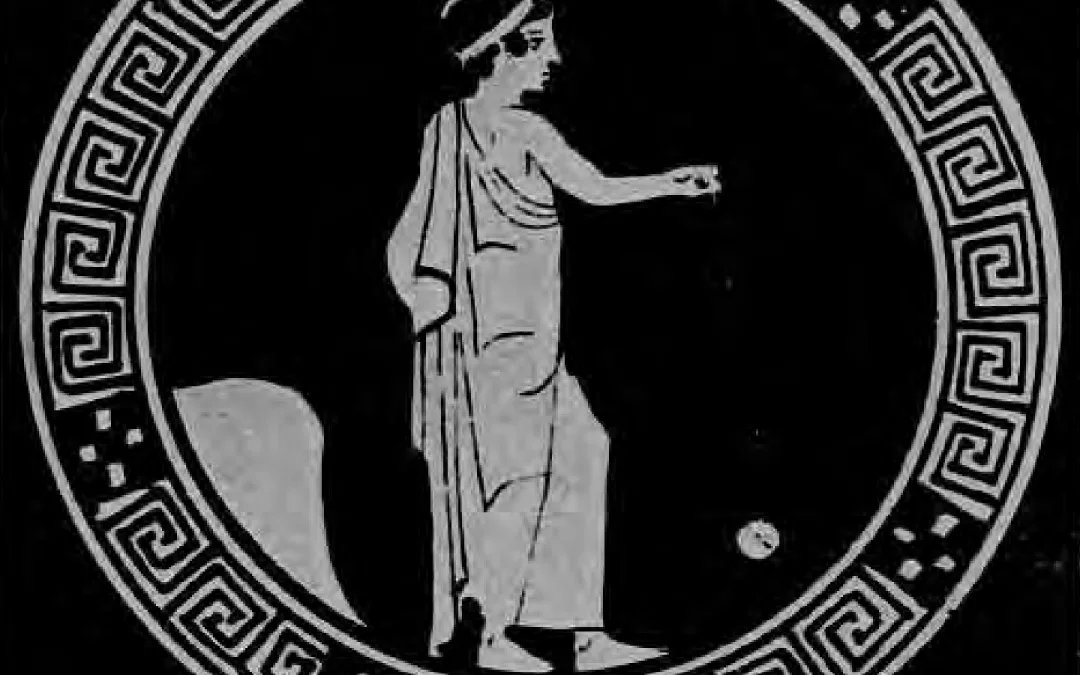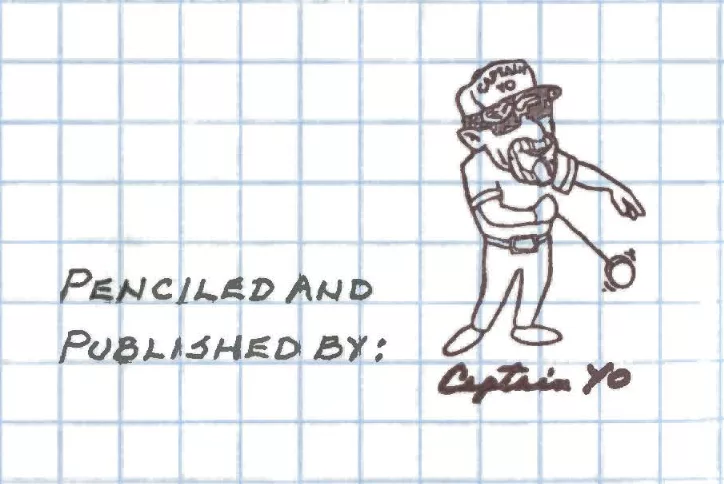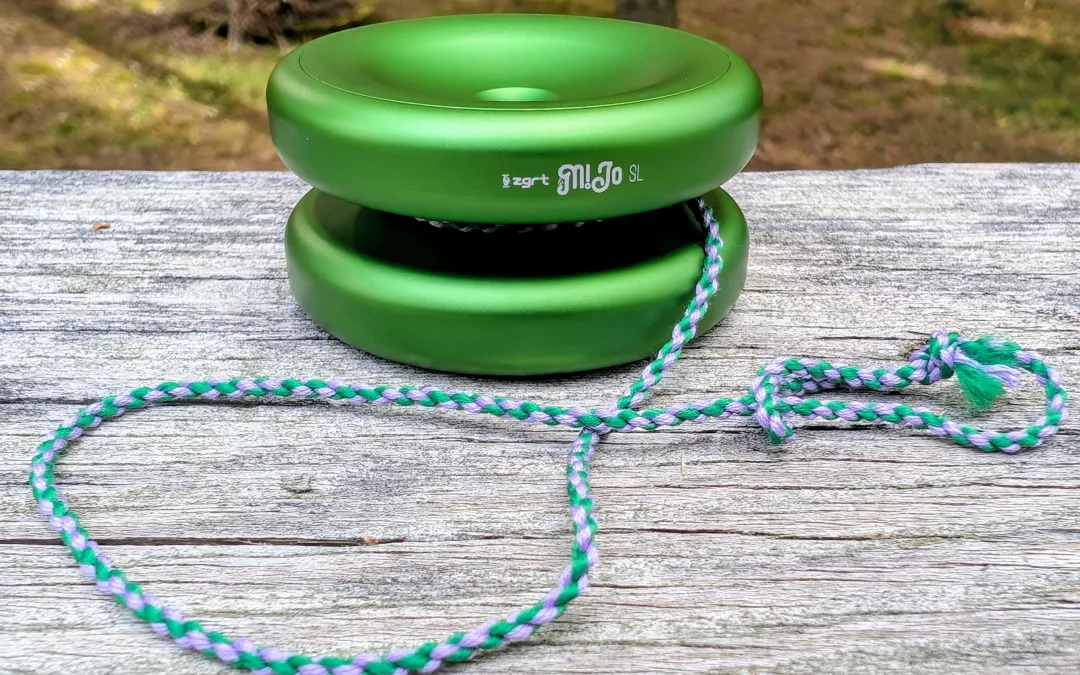


Donald W. Watson’s Monograph Series about Yo-yo Physics
The Monography Series of papers written by Donald W. Watson from 2000 – 2003 are all about yo-yo physics. Initially published by Pencil Point Press, they’re an amazing read that covers a wide range of topics.
All five papers are available to download and read below:

A Look at the ZGRT El MiJo SL
I would like to preface this post by stating that I have never played any of the other El MiJo models, the El MiJo SL (EMSL) being my introduction to the line.
Lately, I’ve become a big fan of slim, responsive yo-yos; the Workhorse and the Plasm being two of my favorites. When ZGRT announced the EMSL, I was immediately interested and reached out to see if they’d be interested in me doing a write-up for the Archive.
What I received was the beautiful green EMSL picture above with a slim D bearing installed, along with an extra full-spec bearing and a slim D bearing blank. Out of the box, the response was near-perfect, making me wonder if I’d never need the bearing blank. 0A play feels tight and snappy in its default configuration, I almost didn’t test the blank. Honestly, I’m not interested in unresponsive play with the EMSL, so I haven’t tried the full-spec bearing.
The EMSL is surprisingly light and nimble, with a finish (and dimple) that’s perfect for pull-starts. Its compact size makes it easily pocketable and an ideal everyday carry. As mentioned before, it performs beautifully with the installed slim D bearing, and with a blank installed, it truly shines in 0A play, especially paired with a slightly thicker string. Combined with its ultra-low weight, all these factors make the EMSL my go-to EDC throw lately.
The only major downside for me is the 6061 Al construction. I’m a very clumsy player and have already put a few good dings in the metal. Of course, I know a sturdier aluminum would affect the weight, and the low weight is a big pro for this yo-yo. It’s more of a “me” problem than anything else.
If you’re looking for a good on-the-go responsive. The EMSL is a damn good choice. Yes, there are cheaper options out there, but this is a throw that’ll last and offers a lot of play with the pack-ins included.

Chronological Butterfly Releases
Exmime put together this list on the YoyoExpert Forums. It was last edited on September 29, 2024. It details the historical releases of the Duncan Butterfly.
This is my first stab at listing a chronological order off the top of my head, and will probably need to become its own thread. Weights and plastic hardness and /or softness are also a variable between all the editions. Detailed pictures and descriptions can be found throughout this thread for most of these models. Others with more knowledge please feel free to add.
1958-1966 1st Wooden 1 piece Butterflys typically with sparkle paint and solid colors.
1962- Special Edition 1 piece wooden Butterfly with comic booklet and stickers to customize and personalize
1962- Mardi Gras Butterfly was the 1st Plastic and part of the Disney World of Color series with inlayed gliter starts.
1967- Flambeau buys the Duncan Brand
1968- 1st Flambeau Plastic Butterfly with Small Engraved Butterfly in the center
1970- Large engraved Butterfly on face
1972- First Screened Butterfly on face also referred to as the “Psychedelic Butterfly”
1976- Back to Engraved face with the “Lace Wing Butterfly”
1980- Lace Wing Butterfly with Reslon-coated axle for increased spin times
1982- the introduction of the “Thick Wing” Butterfly still in solid colors.
1983- The European molds are created and “Rainbow Butterflys” are available internationally
1984- The 1st Translucents with “Thick Wing” Butterflys
1986- The Mariposas, these have a slimmer “Thick Wing” with Butterfly on top and Duncan on the bottom with a Made in Mexico stamp, the cards were still printed in the USA.
1989- The “Triangle Butterfly” appears and continues Translucents
1992-1994 1st Glow Flys, offered with two proof of purchase with Cooco Puffs cereal. Has Cookoo Bird graphic.
1994- The 1st of the Circular Font “The Original Made in the USA”
1998- Mexico production starts along with USA production. Made in the USA is dropped and replaced with ” The Original “
2003- Production starts in China along side with Mexico and USA production is phased out.
2004- 75 year Duncan Anniversary, the 1st of the1958 wooden 3 piece reproductions are released in retro packaging.
2008- 2010 Holiday “Sparkle Flys” sold at Toy’s R Us, gliter translucent versions. These were made in Mexico.
2012-2017 the “Contemporary Flys” made in China, these have a smaller circular print with the AGJRK stamps at the bottom as seen on all of today’s Duncan models. These are what are currently at my local Wal-Mart. These tend to be a harder plastic, compared to the rest of the series.
2012- the first ball bearing version Butterfly XT in translucent colors
2016 – Another run of reproductions wooden Butterfly, a three piece version on the 1958 but smaller and rounder.
2019- Second version of Butterfly XT released in solid colors with another gram of weight.
2019- The AL Butterfly is released at Worlds
2021- New mold for the Contemporary Butterfly. Still hunting for one of these. Some special editions from a Japanese store have new version of a Triangle Butterfly graphic in translucent yellow and black.
2022- New throwback editions expected later this year.
2022 / October – New mold Butterflies, a new Psychedelics , a Pink Target and Purple Amazon editions.
2022/ December Pre-release for 2023 of the new AL Butterfly features a small bearing, thin pads, and new Delrin caps
Spring 2023 – New Pastel solids to be released around Easter.
2024-Fall, Glow in the Dark 95 year edition and Unknown drop
2024-November Target Holiday and Sparkle Flys with 95 anniversary
2025-Spring 2nd edition of the Easter Pastels slight variations in colorways compared to the 2023 release.
2025-Summer Charlie Brown Peanuts series available in four variants with Snoopy and Woodstock

Yoyo Collector: A Tool Built by a Yoyo Collector for Yoyo Collectors
Yoyo Collector is a new tool built by Evan Baron to help yo-yo players catalog and share their collections. The site allows users to track basic information on their throws, along with pictures and private notes. The basic functionality gets the job done, and Evan plans to add more functionality in the future.
Key features Evan has highleted are as follows:
“Privacy (found in the profile settings page) – There are three settings here: Public, Anonymous, and Private
Public: Everyone can see your profile and collections, your information like your description, handle, etc. This setting will be right for most collectors.
Anonymous: Your name and personal details are removed, yet people can still see your collections and yoyos. This setting will be right for those who want to share their collections with the world anonymously, without the desire for attention.
Private: No one can see your profile, your collections, or your yoyos. This setting will be right for those who strictly want to keep track of their collection and keep things to themselves.
Messaging – There is none! It was not my intention to build a site where people can dm and message each other about their collections and yoyos. This site exists solely for collecting purposes and nothing else. The only interaction available is likes and favorites. You can like other peoples’ collections, photos, and yoyos.
Favorites – You can add other peoples’ collections and yoyos to your favorites so that you don’t have to search for them again. To view your favorites, just navigate to your profile (you will have favorite collections and favorite yoyos). Alternatively you can view favorite collections on the All Collections page.“
